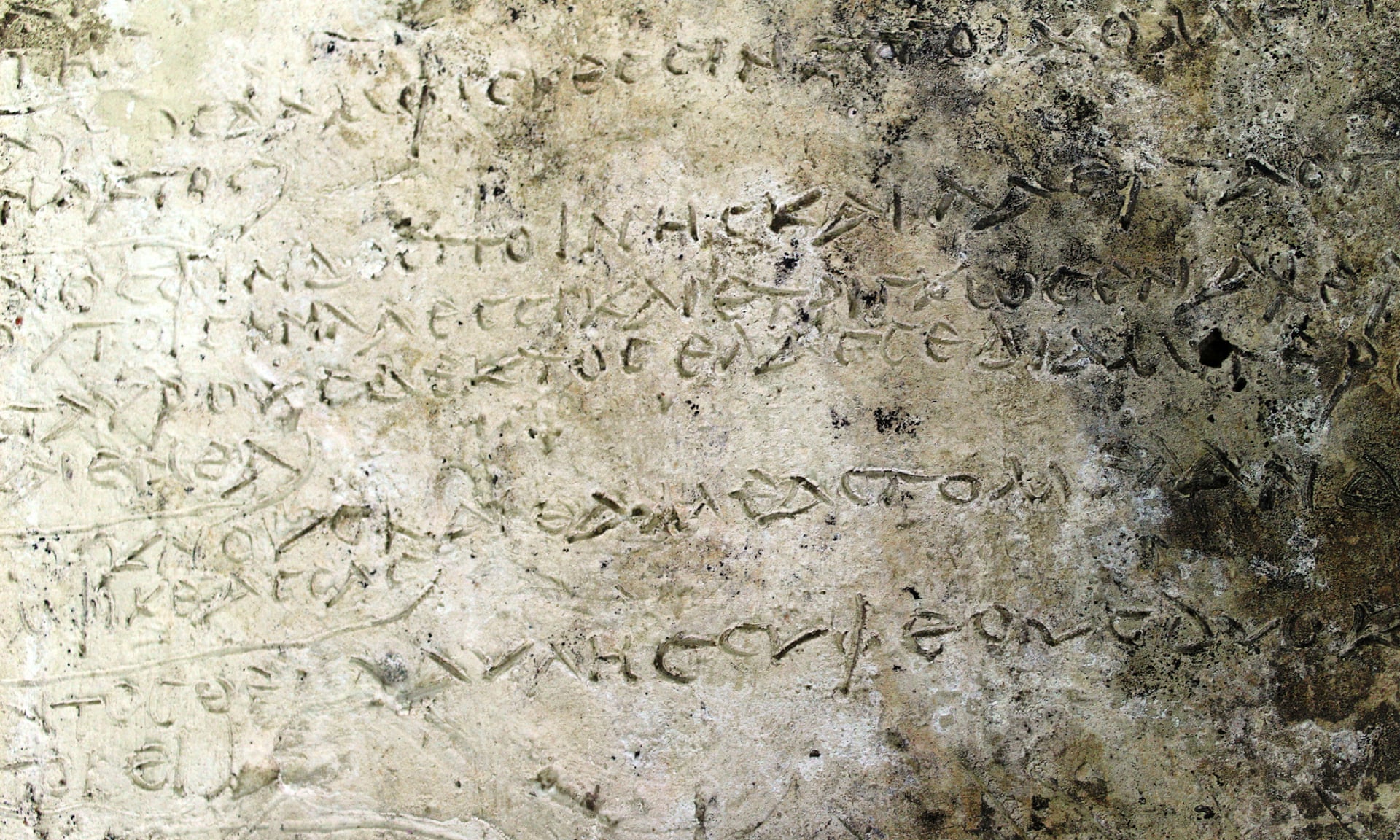Terakotová destička s Homérskými verši
 Během geoarcheologické prospekce prováděné Řeckou archeologickou službou (Αρχαιολογική Υπηρεσία) a Německým archeologickým institutem (Deutsches Archäologisches Institut) byl v červenci 2018 v okolí antické Olympie objeven vzácný nález. V římské lokalitě poblíž Diova chrámu byla nalezena keramická destička s vyrytým nápisem. Po jeho očištění bylo zjištěno, že nápis obsahuje 13 veršů ze 14. knihy Homérovy Odyssey. Verše líčí Odysseův rozhovor se svým přítelem Eumaeem, který byl první osobou, kterou uviděl po návratu domů po své desetileté službě v Trojské válce a stejně dlouhé cestě zpět. Slepý básník Homér, který žil pravděpodobně v 8. století př. n. l., zde popisuje, jak si chovatel prasat Eumaeus během dvaceti let Odysseovy nepřítomnosti postavil farmu a úhledné vepříny, a to bez pomoci svých pánů.
Během geoarcheologické prospekce prováděné Řeckou archeologickou službou (Αρχαιολογική Υπηρεσία) a Německým archeologickým institutem (Deutsches Archäologisches Institut) byl v červenci 2018 v okolí antické Olympie objeven vzácný nález. V římské lokalitě poblíž Diova chrámu byla nalezena keramická destička s vyrytým nápisem. Po jeho očištění bylo zjištěno, že nápis obsahuje 13 veršů ze 14. knihy Homérovy Odyssey. Verše líčí Odysseův rozhovor se svým přítelem Eumaeem, který byl první osobou, kterou uviděl po návratu domů po své desetileté službě v Trojské válce a stejně dlouhé cestě zpět. Slepý básník Homér, který žil pravděpodobně v 8. století př. n. l., zde popisuje, jak si chovatel prasat Eumaeus během dvaceti let Odysseovy nepřítomnosti postavil farmu a úhledné vepříny, a to bez pomoci svých pánů.
Podle prvního odhadu pochází tabulka z římského období, jistě před 3. stoletím n. l. Je to poprvé, co byl takový úryvek nalezen na hliněné tabulce, a odborníci zjišťují, zda se nejedná o nejstarší řecky psaný dochovaný Homérský text (pokud nepočítáme krátké citáty). Destička byla pravděpodobně druhotně použita jako stavební materiál, ale původně byla možná sepsána pro majitele půdy, který o sobě smýšlel jako o Odysseovi své doby.
I přes opatrný přístup nálezců, uvedl časopis „Archeology“ tuto tabulku na seznamu deseti nejvýznamnějších archeologických nálezů roku 2018. Tak či onak se jedná o velice významný nález z hlediska archeologického, epigrafického, historického i filologického.
Earthenware tablet with Homer’s verses
During surficial-geoarcheological researches by the Greek Archaeological Services and the German Institute of Archaeology, on July 2018, surrounding the sanctuary of Ancient Olympia, in western Peloponnese, Greece a rare finding was discovered. In a location of the roman period, adjacent to the Temple of Zeus, an earthenware tablet with an engraved inscription was found and after its restoration 13 verses from the book 14 of Homer’s Odyssey were rescued. These verses talk about Odysseus, who speaks to his lifelong friend Eumaeus, the first person he sees on his return after a decade away from home battling at the Trojan War. The blind bard Homer, who probably lived in the 8th century B.C.E. wrote this account of how Eumaeus, whose job is to take care of the pigs, constructed his own yard and a neatly arranged set of pigsties during the 20 years that Odysseus was away from home, with no help from his owners.
According to a first estimate the tablet dates back to the roman period and certainly before 3rd century AD. It is the first time that such an excerpt is detected on a clay tablet and experts investigate the possibility that it is probably the oldest Homeric text that has been found in the Greek era (with the exception of some small quotes). It is said that the plaque was used as a building material in second use. Initially was written for a landholder who thought himself as an “Odysseus” of his time.
In spite of the wariness of the researchers, “Archeology” magazine enlisted the tablet at one of the 10 most important archaeological findings of 2018 and on. In any case, beyond its uniqueness, it is still a significant archeological, epigraphic, historical and philological text.
Source:
AFP in Athens, Ancient find may be earliest extract of epic Homer poem Odyssey, The Guardian, https://www.theguardian.com/books/2018/jul/10/earliest-extract-of-homers... (last visit: 06-03-2020)
Ngo Robin, Fragment of Homer’s Odyssey Unearthed at Olympia, Biblical Archaeology Society, https://www.biblicalarchaeology.org/daily/news/homer-odyssey-tablet-olym... (last visit: 06-03-2020)
Οι 10 σπουδαιότερες αρχαιολογικές ανακαλύψεις στην Ελλάδα τη δεκαετία 2010-2019, Ανασκαφή, https://anaskafi.blogspot.com/2019/12/10-2010-2019.html (last visit: 06-03-2020)
Autorka textu: Panagiota Diamatari
(překlad z AJ Josef Souček, Národní muzeum)






Komentáře
Přidat komentář